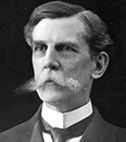Politics: Black Hole of Ideas
Dr. John Bartlit
New Mexico Citizens
for Clean Air & Water
Column of November 3, 2013, Los Alamos Monitor
 Entrepreneurs, scientists and technologists treasure ideas and innovation as the lifeblood of prosperity. Leading music creators, designers and football coaches poke everywhere to find a ray of new light to combine with the tried and true. Creative companies know that ideas are sparked or squelched by factors as humdrum as the work environment, so they work to create new and better work forums.
Entrepreneurs, scientists and technologists treasure ideas and innovation as the lifeblood of prosperity. Leading music creators, designers and football coaches poke everywhere to find a ray of new light to combine with the tried and true. Creative companies know that ideas are sparked or squelched by factors as humdrum as the work environment, so they work to create new and better work forums. Supreme Court Justice Oliver Wendell Holmes, Jr., 1902.
Meanwhile the political system works its hardest to kill all ideas. What impels this losing game?
To begin, ideas are always risky. An idea is a risk first of all because it may fail. A worse risk is if the idea is a huge success and brings some honor and riches to a direct competitor.
Here the plot thickens. The scary part is that, by nature, ideas are hybrids, that is, of mixed stock. Idea breeders call an idea “a feat of association”—a result of looking from different angles to see something not seen before. On occasion, one person is able to look from different angles. More often different people add different angles.
Writer John Steinbeck explained: “Ideas are like rabbits. You get a couple and learn how to handle them, and pretty soon you have a dozen.”
Supreme Court Justice Oliver Wendell Holmes, Jr. perceived: “Many ideas grow better when transplanted into another mind than in the one where they sprang up.”
We have a basic human dilemma. An idea by nature combines varied viewpoints, so a sound idea risks having another viewpoint gain partial credit for it. In the worst case, partial credit could be in the form of votes in the next election. This risk is exactly the instinct that drives the political system to kill all ideas.
Politics has evolved easy methods that do this. A common means of squelching ideas uses the common pool of principles. It is not nearly as innocent as it seems. Principles may lead to ideas and an invention, but they are not invention. Principles do not make anything.
Millions of people came and went knowing the principles that E = IR and materials cannot burn with no oxygen present. Yet it took the versatile mind of Thomas Edison to put these together and invent a useful incandescent light bulb.
Given a societal problem to work on, Republicans recite the words “freedom” and “liberty.” Then say them again. In return, Democrats say their principal words—“justice,” “equality.” Then again. Each party repeats its “principles” as if they were party ideas. None is a map for getting results.
Should we work on having liberty or work on justice for all groups? Those words have a familiar ring, but why? Ah! It is our nation’s Pledge of Allegiance, which ends, “...with liberty and justice for all.” The words in that fleeting moment make no distinction between parties.
To summarize: The parties match each other in pledging allegiance to our indivisible nation. Each party pursues unique choices of the principles that stand together in our common pledge. None is a tangible item, such as a light bulb. The principles all hold and the ideas are all dead.
Another routine way to kill ideas is the quasi-debate. Theory says political campaigns serve the public interest, because each party generates policy ideas that are aired and roundly debated. Good ideas grow with debate and rise to the top; bad ideas fall away.
The theory is sound, but it cannot work when the debate spends itself on the flaws of the person or party offering an idea. Political debate has shriveled to this poor proxy.
Our nation sees, admires and prospers from endless ideas streaming from science, technology and business. New and better ideas grow where the streams mix and mix again. Yet each political party hopes to prosper by snuffing out ideas not purely its own. A losing idea, that one.